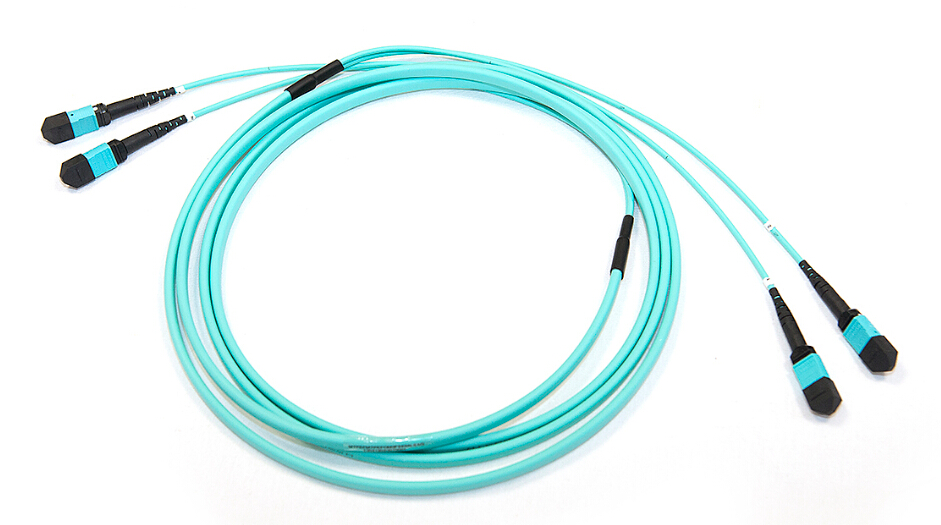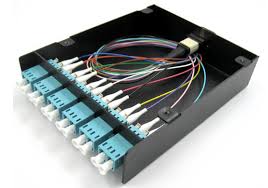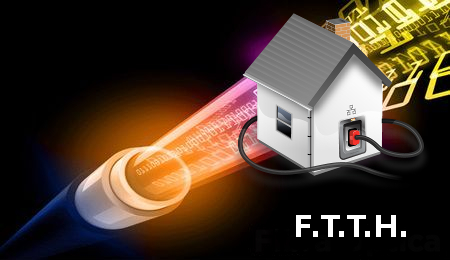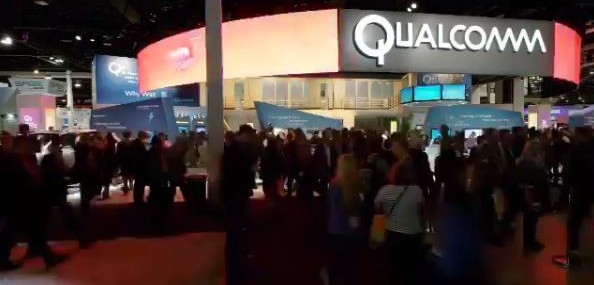There are bandwidth limitations of multimode fiber. Most current LAN networks are composed of about 90% multimode fiber. As the fiber cable plant is upgraded to single mode fiber cables, we must also provide a migration path that continues to reuse the installed multimode cable plant for as long as possible. However, there are some technical issues involved when using single mode equipment on existing multimode cable plant. The biggest problem is caused by Differential Mode Delay (DMD). It refers when a fast rise-time laser pulse is applied to multimode fiber, significant pulse broadening occurs due to the difference in propagation times of different modes within the fiber.
To solve the problem, mode conditioning patch cable was developed as a solution for network applications where Gigabit Ethernet hubs with laser based transmitters are deployed. Mode conditioning patch cable is the mean to achieve the drive distance of installed fiber plant beyond its original intended applications. It allows customer upgrading their hardware technology without the cost of upgrading fiber plant. In addition, mode conditioning patch cable significantly improves data signal quality while increasing the transmission distance.
What is Mode Conditioning Patch Cable?

Mode Conditioning Patch Cable, or Mode Conditioning Patchcord (MCP), is a duplex multimode patch cable that has a small length of single mode fiber at the start of the transmission length. Designed to "condition" the laser launch and obtain an effective bandwidth closer to that measured by the overfilled launch method, the MCP allows for laser transmitters to operate at gigabit rates over multimode fiber without being limited by DMD. The point is to excite a large number of modes in the fiber, weighted in the mode groups that are highly excited by overfill launch conditions, and to avoid exciting widely separated mode groups with similar power levels. This is achieved by launching the laser light into a single mode fiber, then coupling it into a multimode fiber that is off-center relative to the single mode fiber core. This is shown beside.
Tips: Different offsets are required for 50µm and 62.5µm multimode fibers. Engineers have found that an offset of 17~23 µm can achieve an effective modal bandwidth equivalent to the overfill launch method for 62.5µm multimode fibers. And an offset of 10~16 µm is good for 50µm multimode fibers.
The basic principle behind the cable is to launch laser into the small section of single mode fiber. The other end of single mode fiber is coupled to the multimode section of the cable with the offset from the center of the multimode fiber. This patch cable is required with transceivers (e.g.1000BASE-LX/LH, 10GBASE-LX4 and 10GBASE-LRM) that use both single mode and multimode fibers. When launching into multimode fiber, the transceiver can generate multiple signals that causes DMD which can severly limit transmission distances. The MCP removes these multiple signals, eliminating problems at the receiver end. Here is a figure that shows an MCP and how it is typically connected to a transceiver module. When required, it is inserted between a transceiver module and the multimode cable plant.
Requirements for Using MCPs in Laser-Based Transmissions
Gigabit Ethernet
The requirement for MCP is specified only for 1000BASE-LX/LH transceivers transmitting in the 1300nm window and in applications over multimode fiber. MCP should never be used in 1000BASE-SX links in the 850nm window. MCP is required for 1000BASE-LX/LH applications over FDDI-grade, OM1, and OM2 fiber types. MCP should never be used for applications over OM3, also known as "laser-optimized fiber".
Note:
1. In some cases, customers might experience that a link would be operating properly over FDDI-grade, OM1 or OM2 fiber types without MCP. However please note there is no guarantee link will be operating properly over time, and the recommendation remains to use the MCP.
2. There is a risk associated to this type of nonstandard deployment without MCP, especially when the jumper cable is an FDDI-grade or OM1 type. In such case the power coupled directly into a 62.5µm fiber could be as high as a few dBm and the adjacent receiver will be saturated. This can cause high bit error rate, link flaps, link down status and eventually irreversible damaged to the device.
3. In the event customers remain reluctant to deploy MCP cables, and for customers using OM3 cables, please measure the power level before plugging the fiber into the adjacent receiver. When the received power is measured above -3dBm, a 5dB attenuator for 1300nm should be used and plugged at the transmitter source of the optical module on each side of the link.
4. Another alternative for short reaches within the same location is to use a single-mode patch cable. There will be no saturation over single-mode fiber.
10-Gigabit Ethernet
The requirement for MCP is specified only for 10GBASE-LX4 and 10GBASE-LRM transceivers transmitting in the 1300nm window and in applications over multimode fiber. MCP should never be used in 10GBASE-SR links in the 850nm window. MCP is required for 10GBASE-LX4 and 10GBASE-LRM applications over FDDI-grade, OM1, and OM2 fiber types. MCP should never be used for applications over OM3, also known as "laser-optimized fiber."
Notes for 10GBASE-LX4:
1. In some cases, customers might experience that a link would be operating properly over OM2 fiber type without MCP. However chances of experiencing a properly operating link over FDDI-grade or OM1 fiber types without MCP are very low.
2. In the event customers remain reluctant to deploy MCP cables over OM2, and for customers using OM3 cables, it is required to a plug a 5dB attenuator for 1300nm at the transmitter source of the optical module on each side of the link in order to avoid saturation, and potential subsequent link flaps and damage to the device.
3. Another alternative for short reaches within the same location is to use a single-mode patch cable. There will be no saturation over single-mode fiber. Please note the 10GBASE-LX4 devices can reach up to 10 km over single-mode fiber as per compliance to IEEE.
Notes for 10GBASE-LRM:
1. For customers using OM3 fiber type, MCP should not be used. It is highly recommended to measure the power level before plugging the fiber into the adjacent receiver. When the received power is measured to be above 0.5dBm, a 5dB attenuator for 1300nm should be used and plugged at the transmitter source of the optical module on each side of the link.
2. Another alternative for short reaches within the same location is to use a single-mode patch cable. There will be no saturation over single-mode fiber. Please note the 10GBASE-LRM devices can reach up to 300 meters over single-mode fiber.
Notes for the Installation of MCPs
When using 1000BASE-LX/LH, 10GBASE-LX4 and 10GBASE-LRM transceivers with legacy 62.5µm or 50µm multimode fiber, you must install MCP between the transceiver and the multimode fiber cable on both ends of the link. The MCP is required for all links over FDDI-grade, OM1 and OM2 fiber types, and should never be used for applications over OM3 and more recent fiber types.
Note: It is not recommended using 1000BASE-LX/LH, 10GBASE-LX4 and 10GBASE-LRM transceivers with multimode fiber and no patch cable for very short link distances (tens of meters). The result could be an elevated Bit Error Rate (BER) and receiver damage.
The MCP is installed between the transceiver and the patch panel. Two MCPs are required per installation. To install the patch cable, follow these steps:
Step 1 - Plug the single mode fiber connector into the transmit bore of the transceiver.
Step 2 - Plug the other half of the duplex connector into the receive bore of the transceiver.
Step 3 - At the other end of the patch cable, plug both multimode connectors into the patch panel.
Step 4 - Repeat Step 1 through Step 3 for the second transceiver located at the other end of the network link.
Read more »








.jpg)
.jpg)
.jpg)

.jpg)
.jpg)
.jpg)





